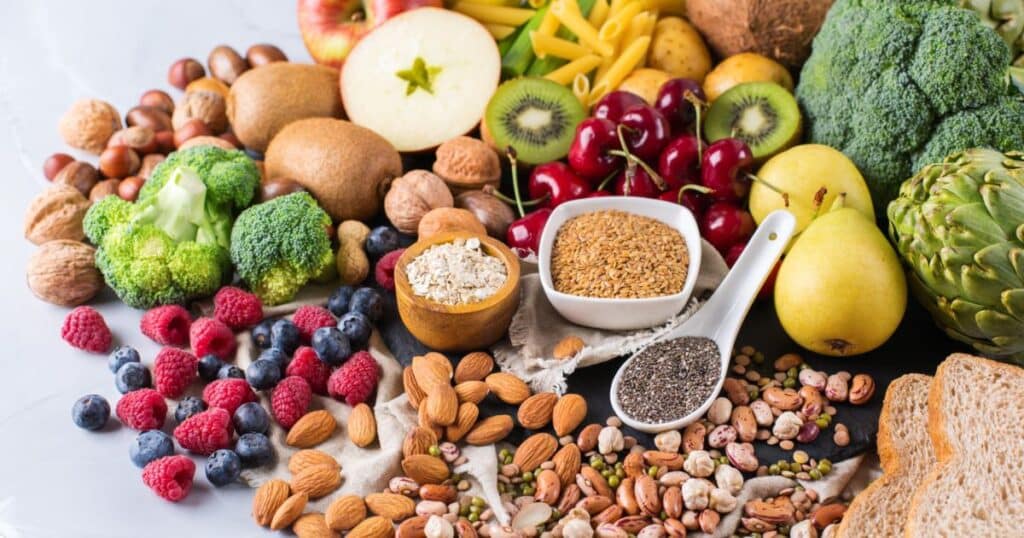When it comes to fruits and vegetables, most people focus on the flesh, discarding the peels without a second thought. However, did you know that many of the vital nutrients found in these foods are actually concentrated in their peels? At WellHealthOrganic.com, we believe in maximizing the nutritional value of every bite, and that includes embracing the often-overlooked peels of fruits and vegetables. In this comprehensive guide, we’ll explore the nutritional benefits of eating peels and share easy ways to incorporate them into your diet. Discover how you can unlock a treasure trove of vitamins, minerals, and antioxidants by simply eating your peels with WellHealthOrganic.com’s expert insights.
The Nutritional Powerhouse of Peels
- Fiber: Peels are rich in dietary fiber, which is essential for digestive health, weight management, and blood sugar regulation. Fiber promotes satiety, aids in digestion, and helps prevent constipation, making it an important component of a balanced diet.
- Vitamins: Many vitamins are concentrated in fruit and vegetable peels, including vitamin C, vitamin A, vitamin K, and various B vitamins. These vitamins play crucial roles in immune function, vision health, blood clotting, and energy metabolism.
- Minerals: Peels are also a good source of essential minerals such as potassium, magnesium, calcium, and iron. These minerals are involved in numerous physiological processes in the body, including muscle function, bone health, and oxygen transport.
- Antioxidants: Fruit and vegetable peels contain a variety of powerful antioxidants, including flavonoids, polyphenols, and carotenoids. These compounds help protect the body against oxidative stress and inflammation, reducing the risk of chronic diseases such as heart disease, cancer, and neurodegenerative disorders.
Types of Peels to Eat
- Citrus Peels: The peels of citrus fruits like oranges, lemons, and grapefruits are rich in vitamin C, flavonoids, and essential oils. They can be grated or zested and added to salads, marinades, baked goods, or infused into hot water to make fragrant citrus teas.
- Apple Peels: Apple peels are packed with antioxidants, including quercetin and catechins, as well as soluble fiber. Enjoy the crisp texture and tart flavor of apple peels by leaving them on when eating apples raw, or incorporate them into homemade applesauce, pies, or smoothies.
- Potato Peels: Potato peels contain valuable nutrients such as potassium, vitamin C, and B vitamins, as well as resistant starch, which acts as a prebiotic to support gut health. Leave the peels on when roasting or baking potatoes to retain their nutritional benefits, or make crispy potato skins as a delicious snack.
- Carrot Peels: Carrot peels are a good source of beta-carotene, a precursor to vitamin A, as well as fiber and antioxidants. Scrub carrots thoroughly and leave the peels on when juicing, roasting, or steaming to maximize their nutritional value.
Antioxidants and Other Hidden Perks of Eating the Peel

Beyond their impressive vitamin and mineral content, fruit and vegetable peels are also rich sources of antioxidants and other beneficial compounds that can profoundly impact your health. Let’s delve into some of the hidden perks of eating peels:
Antioxidant Power
Peels are packed with powerful antioxidants that help protect your cells from damage caused by free radicals, which can contribute to the development of various chronic diseases:
- Carotenoids: Compounds like beta-carotene and lycopene, found in abundance in pumpkin, carrot, and sweet potato peels, have been shown to have potent antioxidant and anti-inflammatory properties, potentially reducing the risk of certain cancers.
- Flavonoids: These plant-based compounds, such as anthocyanins (found in cabbage, red grapes, and berries), have been linked to lower levels of inflammation and a reduced risk of chronic diseases like heart disease and certain types of cancer.
- Ellagic acid: Present in strawberries and raspberries, this antioxidant has been associated with a lower risk of heart disease and may also possess anti-cancer properties.
Mood-Boosting Compounds
Did you know that citrus peels contain aromatic compounds like limonene and naringin that have been shown to have calming and mood-boosting effects? These compounds may help alleviate stress and anxiety, making citrus peels a valuable addition to your diet for both physical and mental well-being.
Detoxification Support
Consuming fruit and vegetable peels may also support your body’s natural detoxification processes. These nutrient-dense skins can stimulate bile production, which helps to emulsify and remove toxins from the body. Peels may support phase 2 liver detoxification, further enhancing your body’s ability to eliminate harmful substances.
By incorporating peels into your diet, you’re not only getting a boost of vitamins, minerals, and fiber, but also a wide array of antioxidants and other protective plant compounds that can have profound impacts on your overall health and well-being.
Tips for Conveniently Adding More Peels to Your Meals

Now that you understand the incredible nutritional benefits of fruit and vegetable peels, you may be wondering how to incorporate them into your diet easily and conveniently. Here are some simple tips to help you get started:
- Bake Peel Chips or Fries: Transform sweet potato or pumpkin peels into deliciously crunchy chips or fries by tossing them with a little oil, herbs, and spices, and baking until crispy. These make for a fiber-rich, nutrient-packed snack or side dish.
- Blend Peels into Smoothies: Add nutrient-packed citrus or banana peels to your morning smoothie or juice for an extra antioxidant punch. Just be sure to remove any bitter white pith from the citrus peels first.
- Use Peels in Soups and Sautees: Instead of peeling carrots, zucchini, or potatoes, simply grate or thinly slice them (with peels on) and add them to your favorite soups, stews, or sauteed dishes for an extra boost of fiber and nutrients.
- Eat Raw Peels with Dips: Enjoy the peels of apples, pears, kiwis, mangoes, and papayas raw by dipping them in nut butter, yogurt, or hummus for a portable and nutritious snack.
- Zest and Bake with Peels: Use the zest of citrus peels to add flavor and nutrients to baked goods like cookies, cakes, and breads. You can even try making sweet orange peel candy for a tasty treat.
- Get Creative with Veggie Scraps: Don’t toss those turnip greens, beet stems, or broccoli stalks! Roast them with a bit of oil and seasoning for a flavorful and nutrient-dense side dish or snack.
Remember, the key is to start slowly and incorporate peels gradually into your meals and snacks. Begin with one or two types of peels that you enjoy, and experiment with different recipes and preparation methods to find what works best for you and your family.
